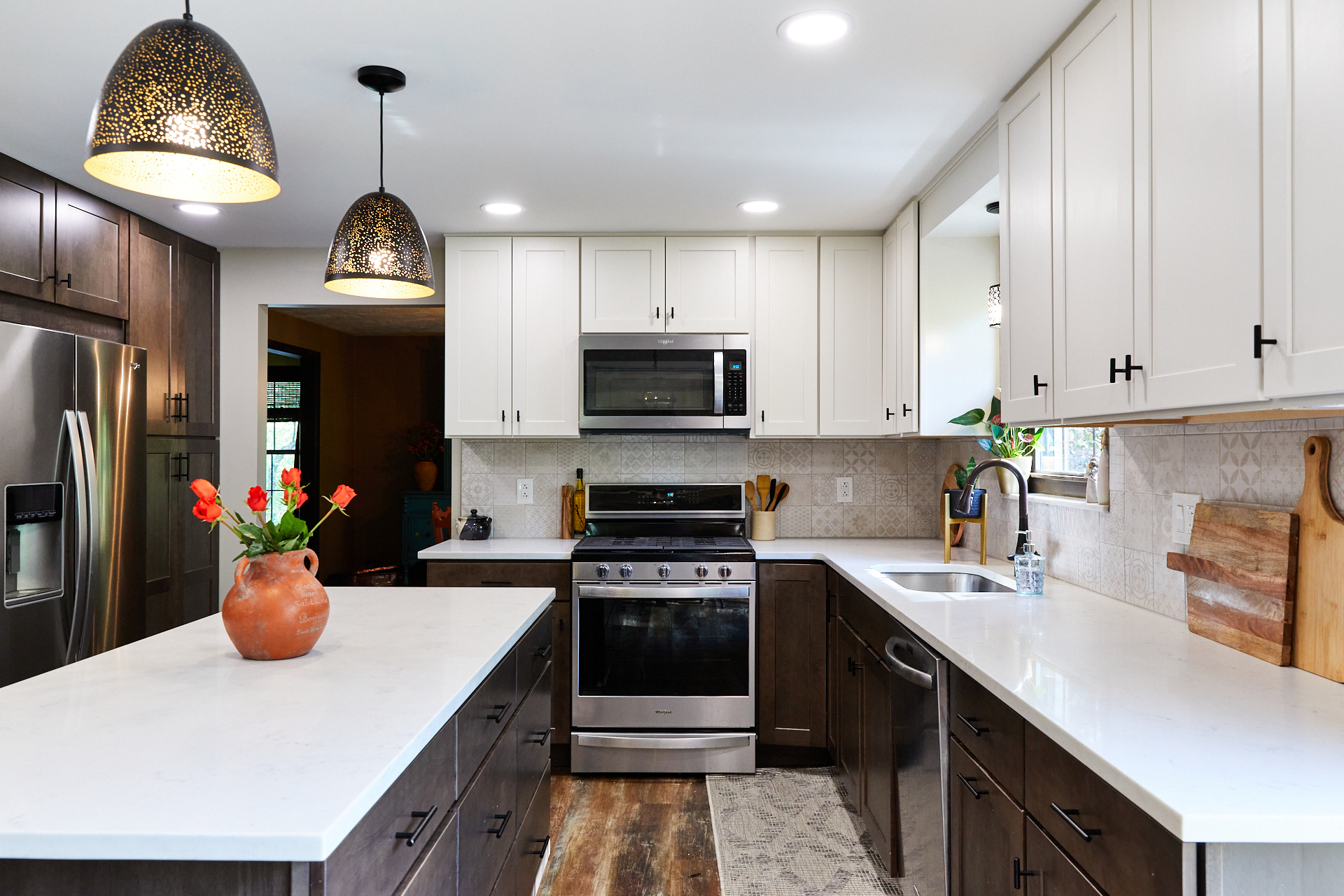From lighting to soaking tubs, many elements go into a new bathroom design or renovation. However, nothing brings a room together quite like tile. With so many colors, features, and materials from which to choose, finding the right tile can be a laborious process. With this guide, you can be sure you’re making the best choice for your home – today and for the future.
Quick Tips for Choosing Tile
Before diving into the different types, colors, and styles of tile, be sure to first consider these quick tips when starting your bathroom project.
- Think about cohesiveness; your bathroom should largely match the same style as the rest of your home, particularly if you plan to sell in the near future.
- Stay neutral if return on investment is your priority; if you are redoing your bathroom to put your house on the market, sticking to neutral colors can attract more buyers.
- Think about functionality; some tiles are lovely but are very slippery when wet, increasing the likelihood of injury.
- Keep your budget in mind. A custom bathroom can be expensive, and spending thousands extra on tile can put you in the hole. Instead, focus on something that looks attractive but still meets your budget.
Material
Tile comes in many different materials, each with its own unique pros and cons. Before moving forward, it’s important to know the details of the types of tile you are considering.
Ceramic Tile
Ceramic tiles are great if you’re redoing a large area and don’t want to spend a lot of money. It comes in the classic white subway tile, but it’s also available in all shapes and sizes, giving homeowners many possibilities to choose from. It’s durable, attractive, and is generally easy to install. These tiles can fit virtually any aesthetic and can be used on the walls, floor, and within the shower. Ceramic does not, however, retain heat well. If you are planning on going with ceramic tile flooring and temperature is an area of concern, you could consider installing radiant floor heating underneath the tile.
Vinyl Tile
Vinyl is a popular material for bathroom floors because it’s inexpensive and practical. It’s highly water-resistant and also insulates well, so it won’t feel cold on your feet. The material has come a long way in recent years and is available in a wide range of colors, styles, and patterns, including options that look similar to stone or wood.
Glass Tile
Unique and elegant, glass tiles can add an upscale look to any bathroom. While they are most popular as a backsplash, glass tiles are actually usable anywhere on the walls, countertops, or in a shower. It usually isn’t a good option for flooring, however, as it’s slipperier than other forms of tile. Glass is great for smaller bathrooms because it will help light bounce around the room.
Stone Tile
Stone tile can provide a rustic, natural feel to any bathroom, offering a warm and inviting atmosphere. While more expensive, stone is beautiful and elegant in virtually any setting. However, stone tile can be higher maintenance than other, more durable forms of tile. It’s more prone to scratches, staining, and cracking, which can lead to higher repair costs. Despite this, it can be a lovely choice for floors, walls, and shower spaces.
Porcelain Tile
Technically a subtype of ceramic tile, porcelain is among the most attractive options available. Porcelain tiles are denser than ceramic, extremely durable and easy to care for, making it a solid choice for most homeowners. Porcelain tile is also one of the best substitutes for natural stone tile, if you are looking for a stone alternative. It is appropriate for use in the shower, on the floors, and on the walls, because the surface absorbs little moisture. Installation of porcelain tile can be challenging, so leaving this project to a pro is recommended.
Size
From tile averaging one square foot to one square inch, there are plenty of size options to consider. Some prefer the multi-faceted look of many small tiles, while others like the traditional appearance that large tiles can provide. Larger tiles can make a space feel bigger than it truly is – a perk for most bathrooms. However, smaller tile allows for more flexibility, providing a way to add depth and creativity through mosaics and the mixing and matching of colors and materials.
Color Scheme
Most bathrooms are largely neutral in color, adorned in shades of white, gray, and black. However, there is no rule that says a bathroom needs to be subdued. If you prefer louder colors, like blues and reds, these are available for your bathroom. A current trend involves different shades of blue, offering an ocean-like appearance. Homeowners can also choose multiple shades of white and off-white to complement a marble or granite countertop as well.
Pattern and Style
Tile can be uniform in one color, but it can also be used to create works of art. If you are a fan of mosaics, more creative styles, or any other unique look, small tiles in varying shapes and styles may be the right choice for you.
Tile is typically simple and smooth on the surface, but stamped tiles are also an option. Most common in ceramic and porcelain tile, stamped tile can add texture and complexity to a design.
Before moving forward, be sure to explore inspiration photos and evaluate the options available through local tile retailers. Some bathrooms are a good fit for more nontraditional avenues, and the variations in patterns and style can help you create a look that’s best suited for you.
Final Thoughts on Picking the Perfect Tile
When you want a bathroom that resonates with your own personal style as well as what buyers respond to best, the right tile can bring any room together. From simple white ceramic tile to elegant stone, there are plenty of options out there. Before getting started, be sure you know what you want the overall look to be, how much you’re willing to spend, and the ROI you hope to achieve.
Originally published by Redfin

